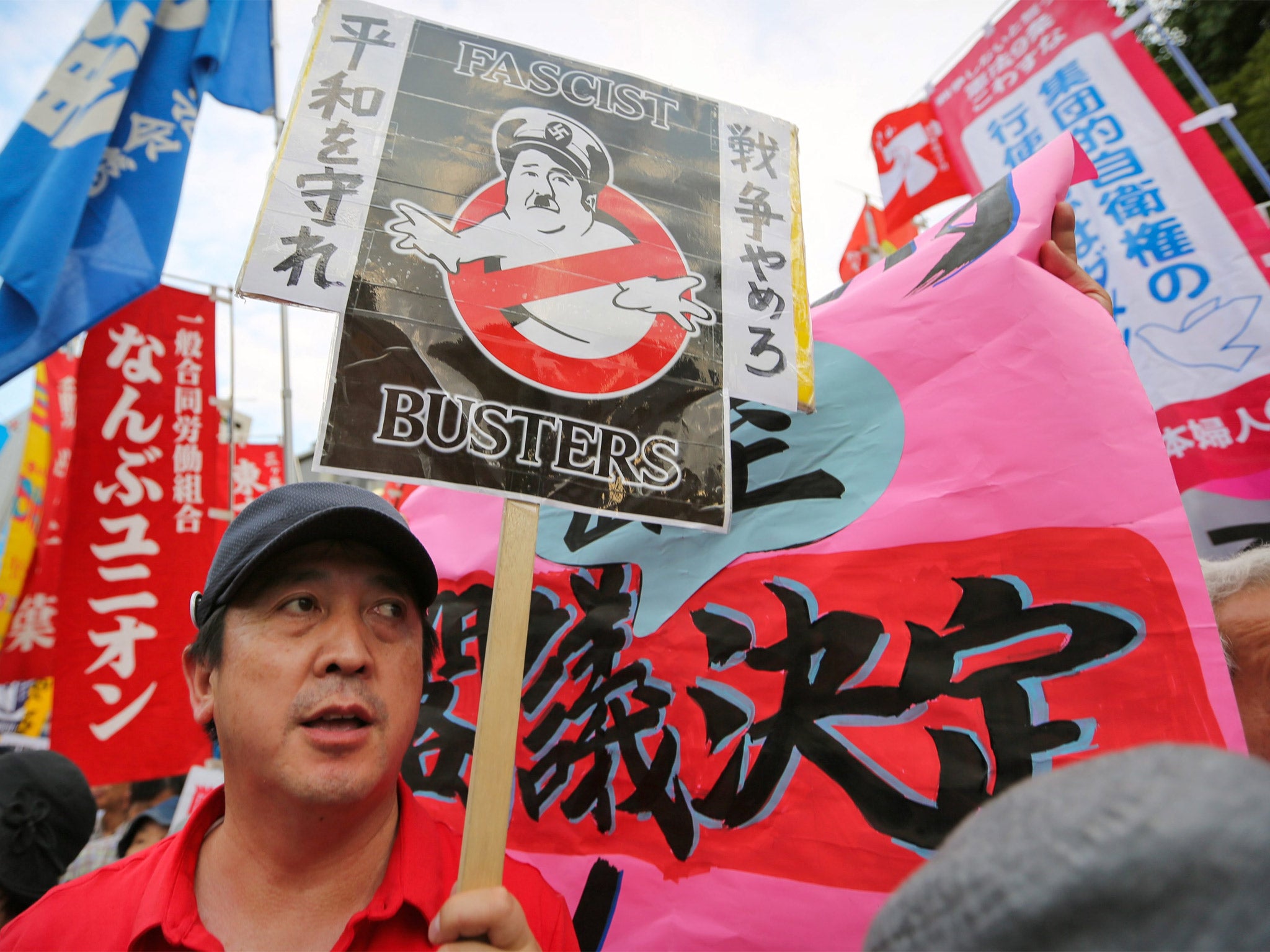Japan's pacifist constitution: After 70 years, nation changes the rules so it can go to war
The country will now be able to engage in collective self-defence and come to the aid of a military ally who is under attack, but the move has proved to be bitterly divisive

Japan’s coalition government has approved a controversial reinterpretation of the nation’s pacifist constitution that will let its troops fight overseas for the first time since the Second World War.
The decision means that Japan will be able to engage in collective self-defence and come to the aid of a military ally under attack – principally the United States. The Prime Minister, Shinzo Abe, says the new strategy, widely viewed as the biggest change to Japan’s defence posture in nearly 70 years, is needed to deal with growing threats in the Asia-Pacific region.
“The global situation surrounding Japan is becoming ever more difficult,” Mr Abe said in a televised press conference. “Being fully prepared is effective in discouraging any attempt to wage a war on Japan. The cabinet decision today will further lessen the chance of Japan being engaged in war. That is my conviction.”
The move is backed by the US, Japan’s main military ally, but it has been bitterly divisive in a country where pacifism is deeply embedded. Polls show that most Japanese oppose the reinterpretation. Thousands of demonstrators have been outside the Prime Minister’s office in Tokyo since Monday, chanting anti-war slogans.
On Sunday, a man set himself alight outside Tokyo’s busiest train station in apparent protest. “Abe is ignoring public opinion and our constitution because he wants a bigger military,” said Yumiko Fujiwara. “I can’t forgive him.”
The cabinet decision has also angered Beijing. A stinging editorial in the Xinhua English website said Mr Abe is “leading his country down a dangerous path” by “gutting the constitution”. The editorial said: “No matter how Abe glosses over it, he is dallying with the spectre of war through a cheap scam.”
Mr Abe spent months negotiating the change with his government’s coalition partner, the Buddhist-backed New Komeito, which pledged to protect the constitution. The reinterpretation is a compromise between the pacifism of New Komeito and the more hawkish line taken by Mr Abe’s Liberal Democrats (LDP).
A draft cabinet resolution said Japan would be able to come to the aid of an ally in limited circumstances, such as if an attack posed “an imminent threat to Japan’s survival” or the lives and rights of its people. It said the right to “minimum force” would be exercised if other means to eliminate that threat have failed. Mr Abe says such rights are needed to allow Japan to become a “proactive” contributor to world peace.
Months of cabinet discussions have revealed deep divisions on the scope of interpretation for military actions allowed under the law. Mr Abe wants Japan to join mine-sweeping operations through sea lanes in the Middle East, through which most of the oil destined for Japan passes, but New Komeito argued that clearing mines during war went far beyond self-defence.
Critics say the new guidelines have been left deliberately vague to allow the government more room to decide military engagements.
“They’re only the opening step in future plans to send Japanese soldiers abroad,” said Hiroyuki Konishi, an opposition lawmaker who opposed the changes. The constitution was written in 1946 during the American occupation of Japan.
Subscribe to Independent Premium to bookmark this article
Want to bookmark your favourite articles and stories to read or reference later? Start your Independent Premium subscription today.

Join our commenting forum
Join thought-provoking conversations, follow other Independent readers and see their replies